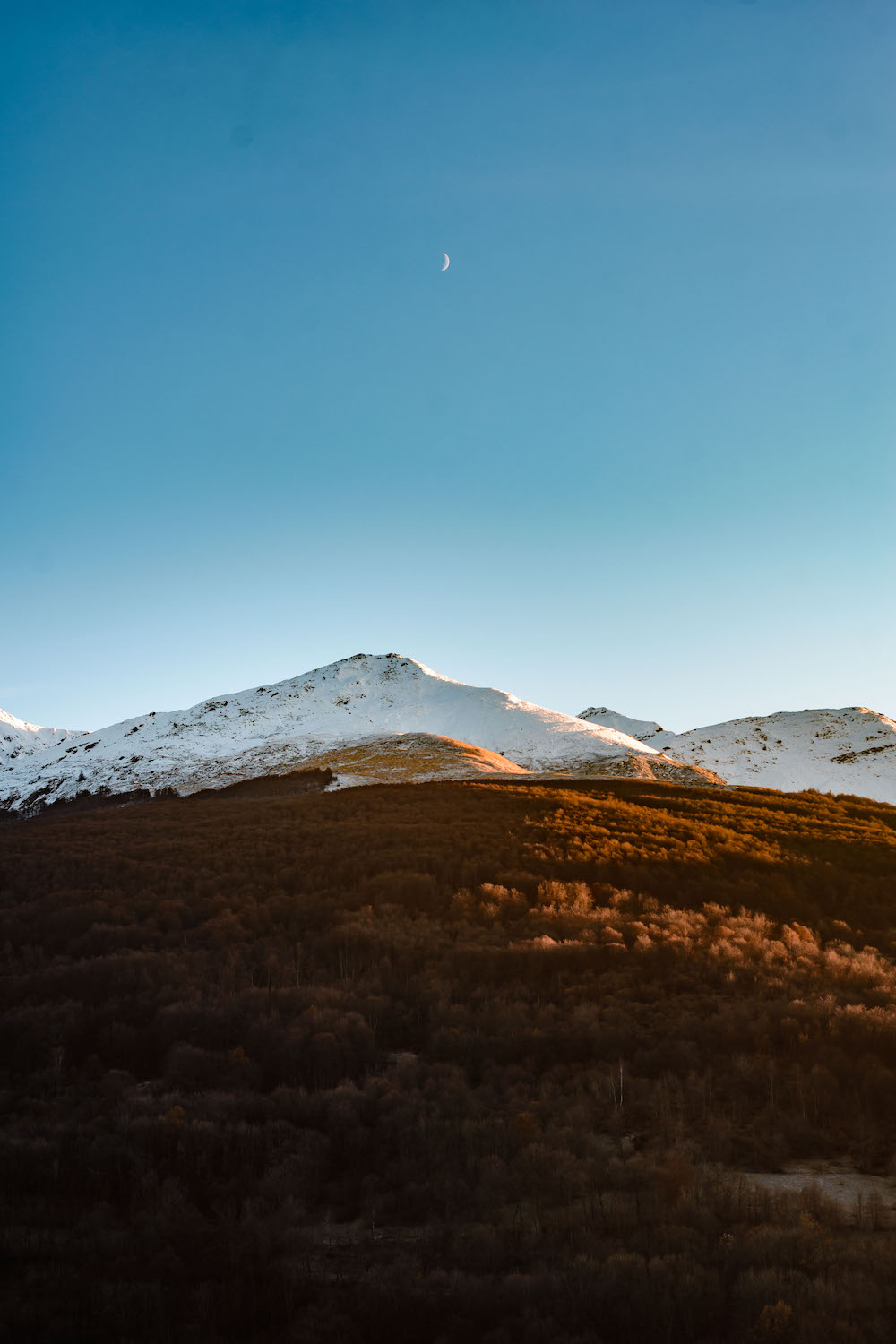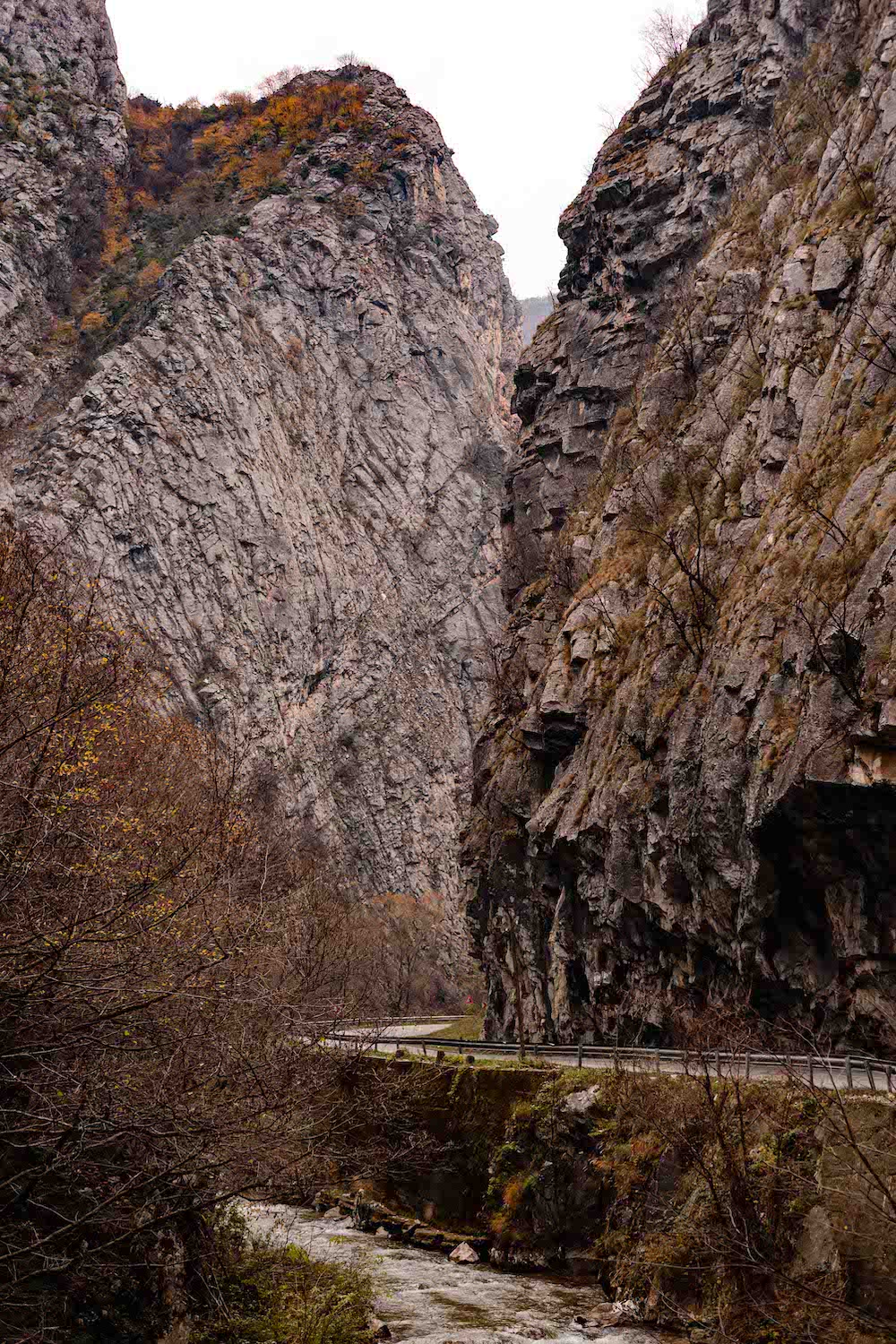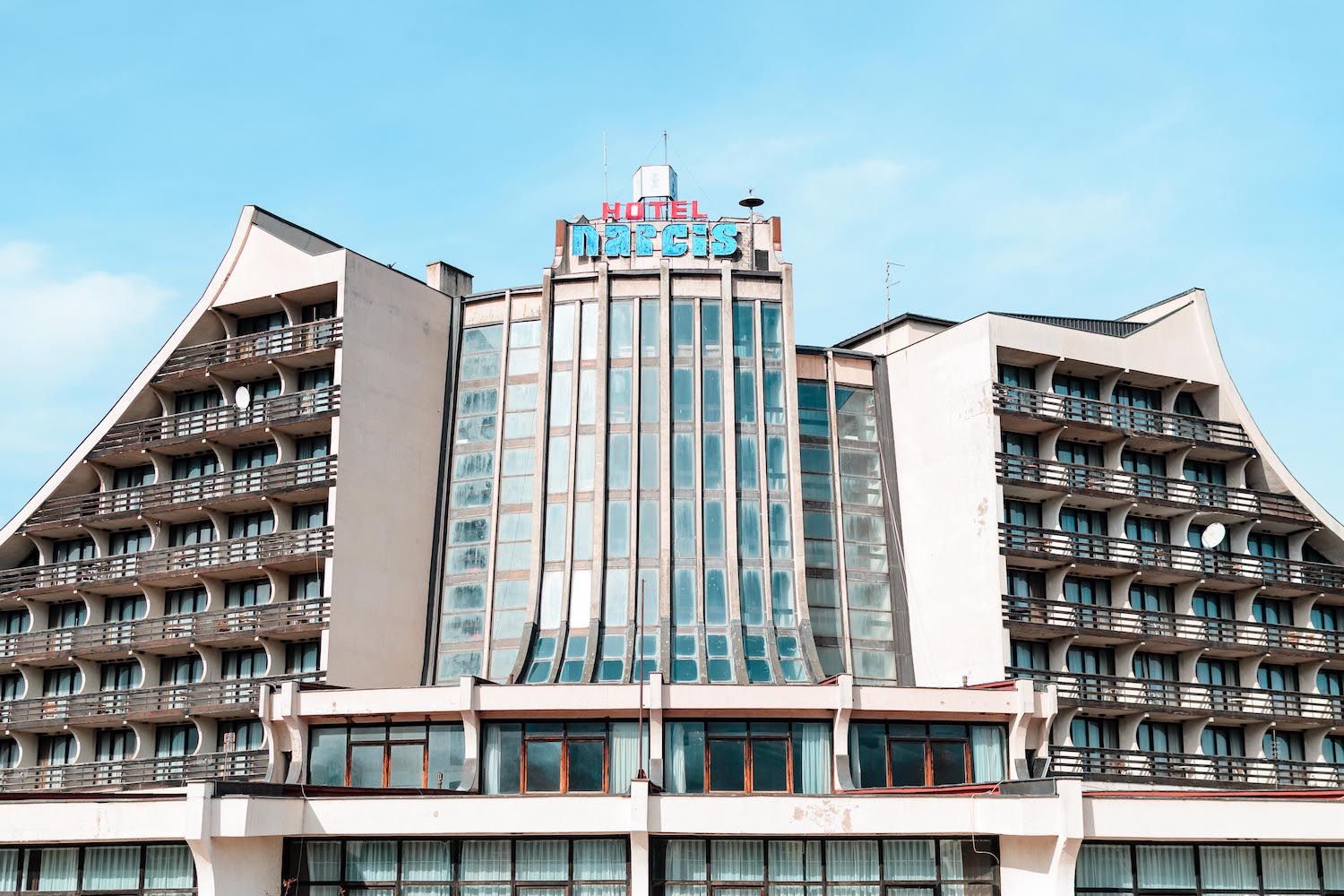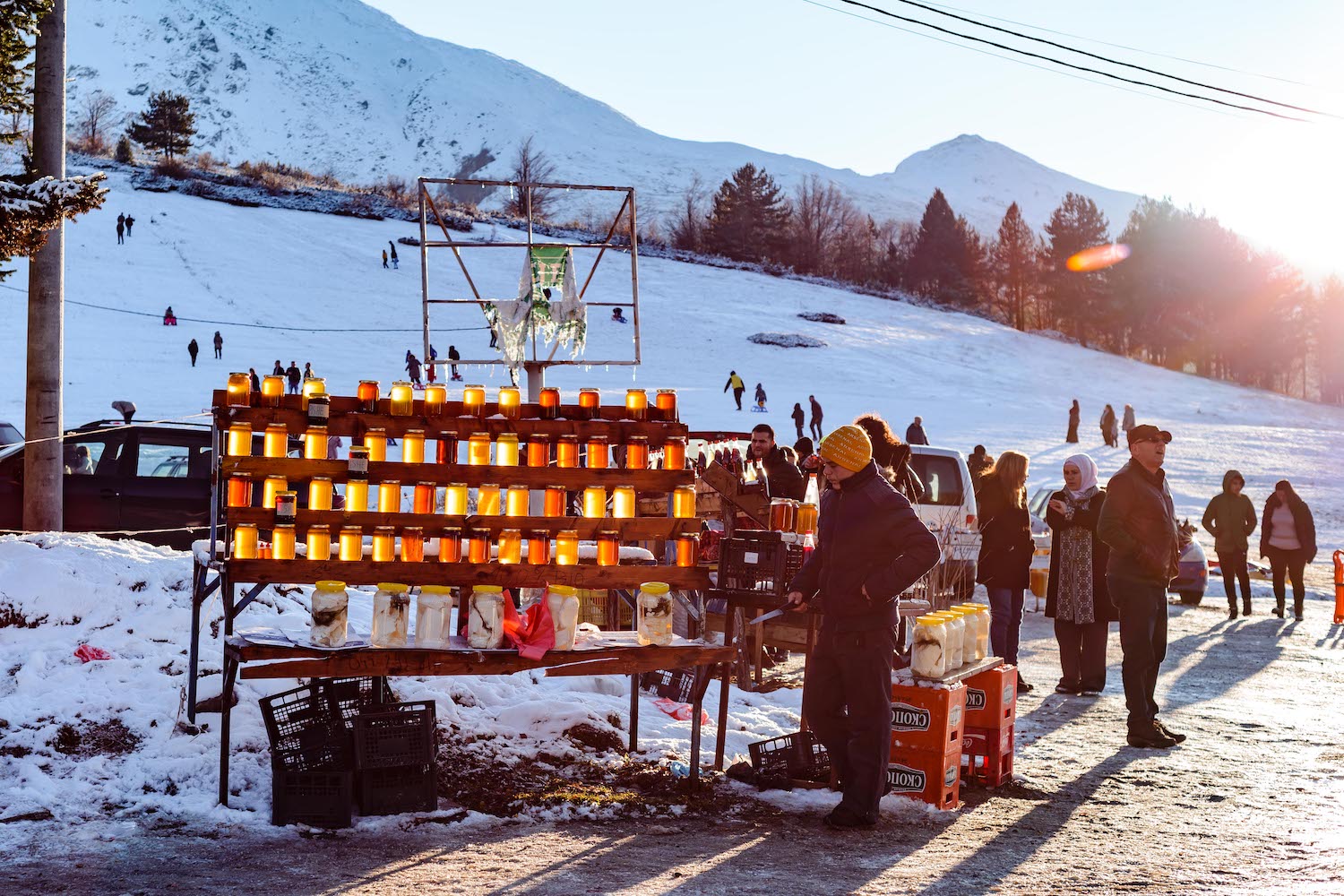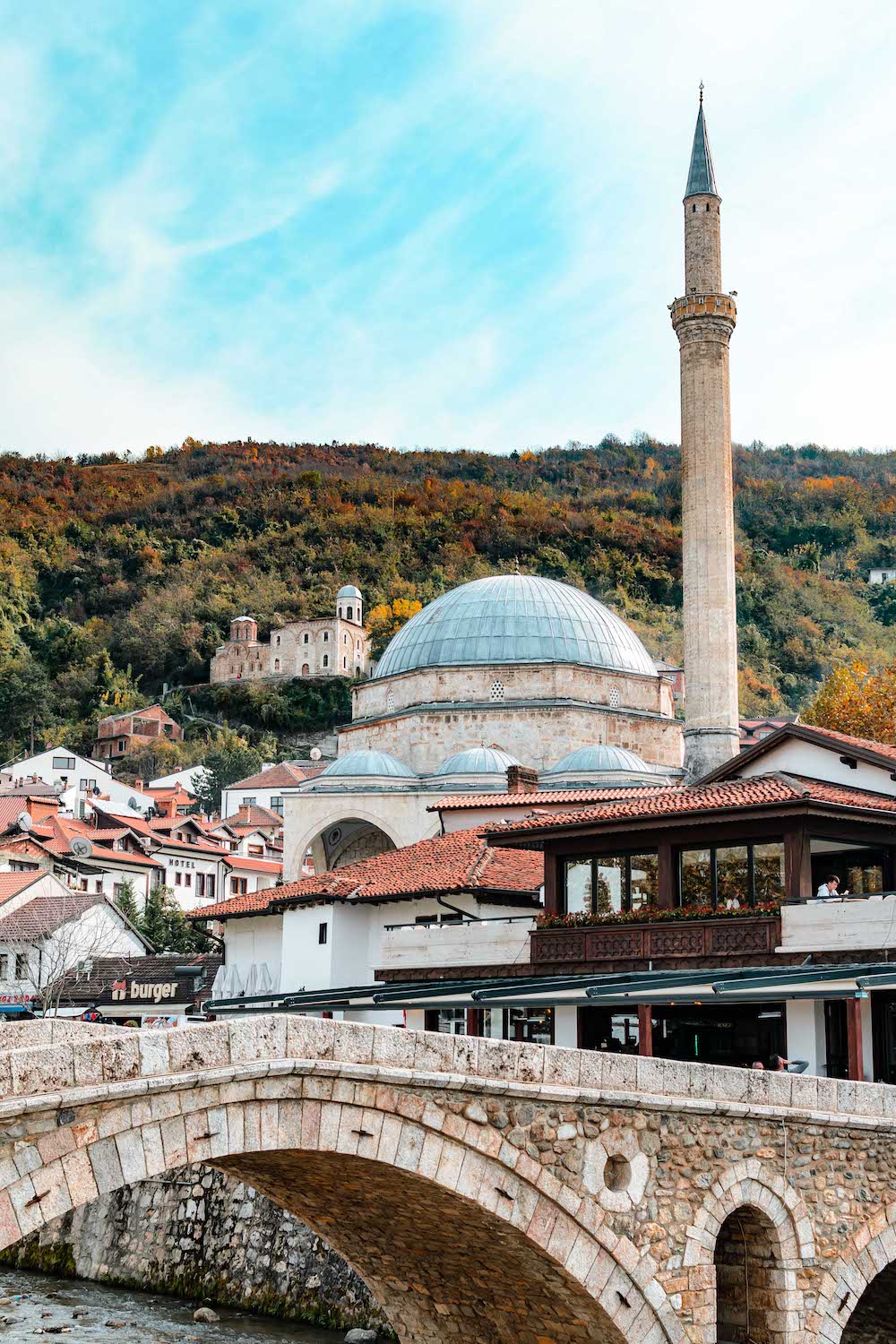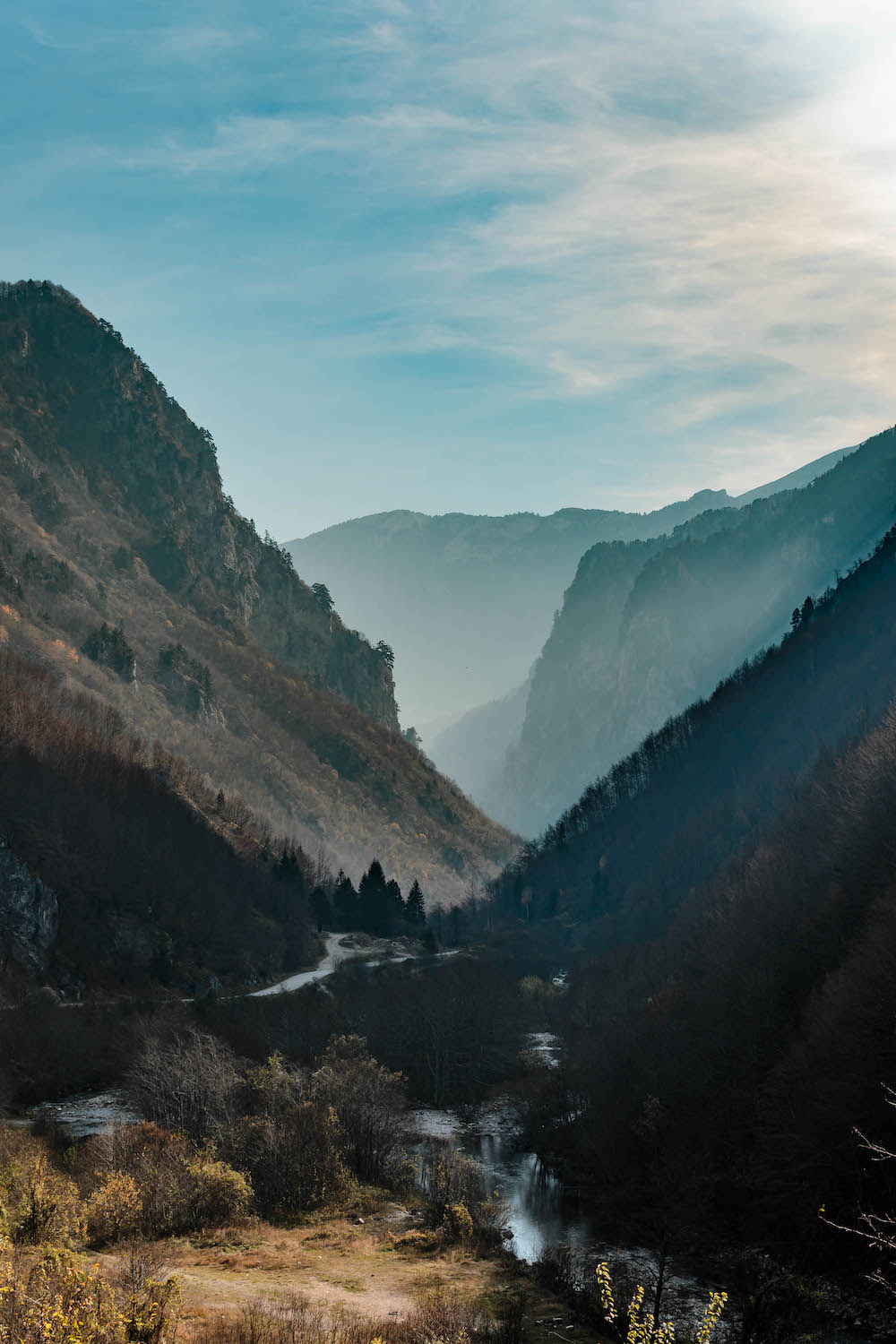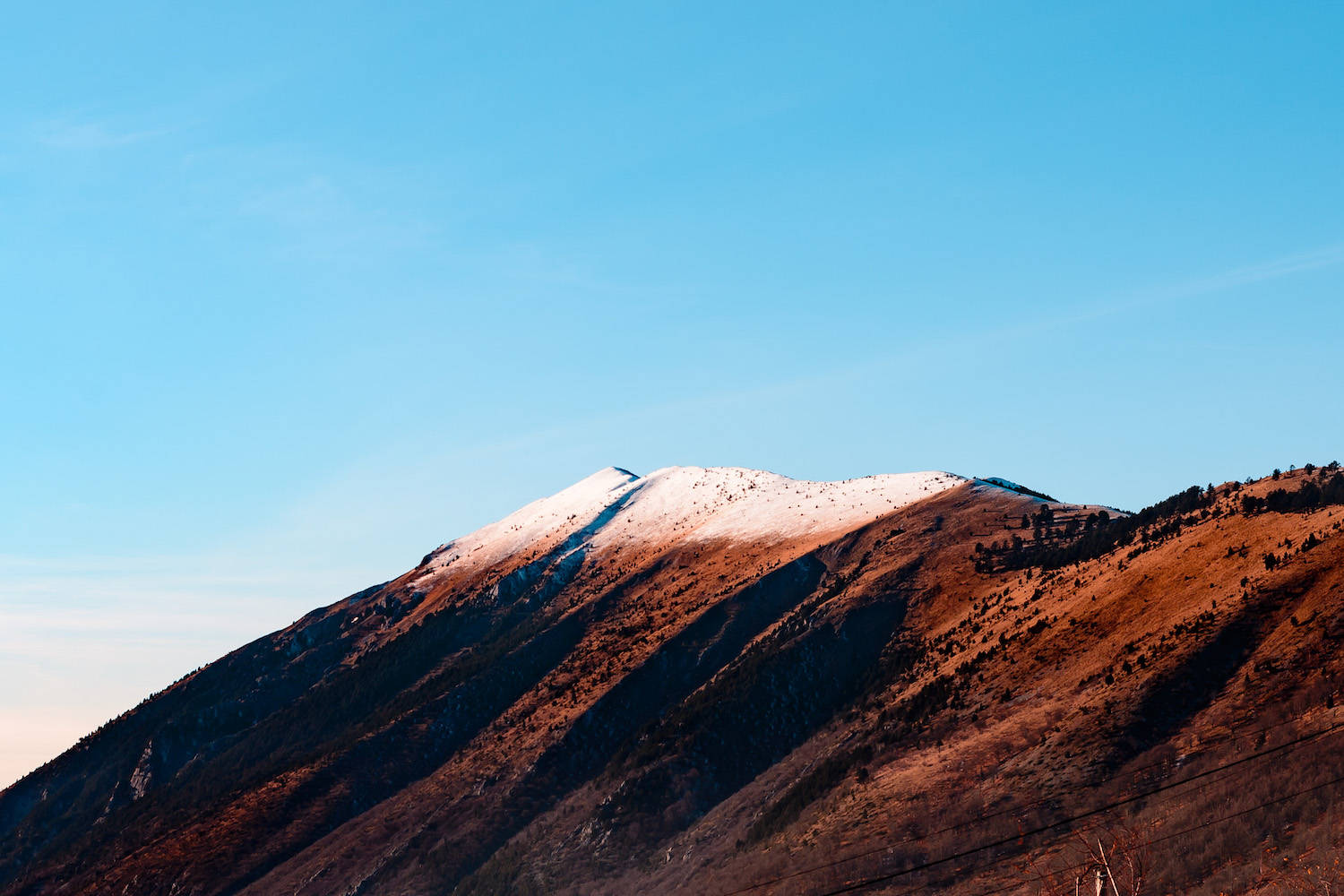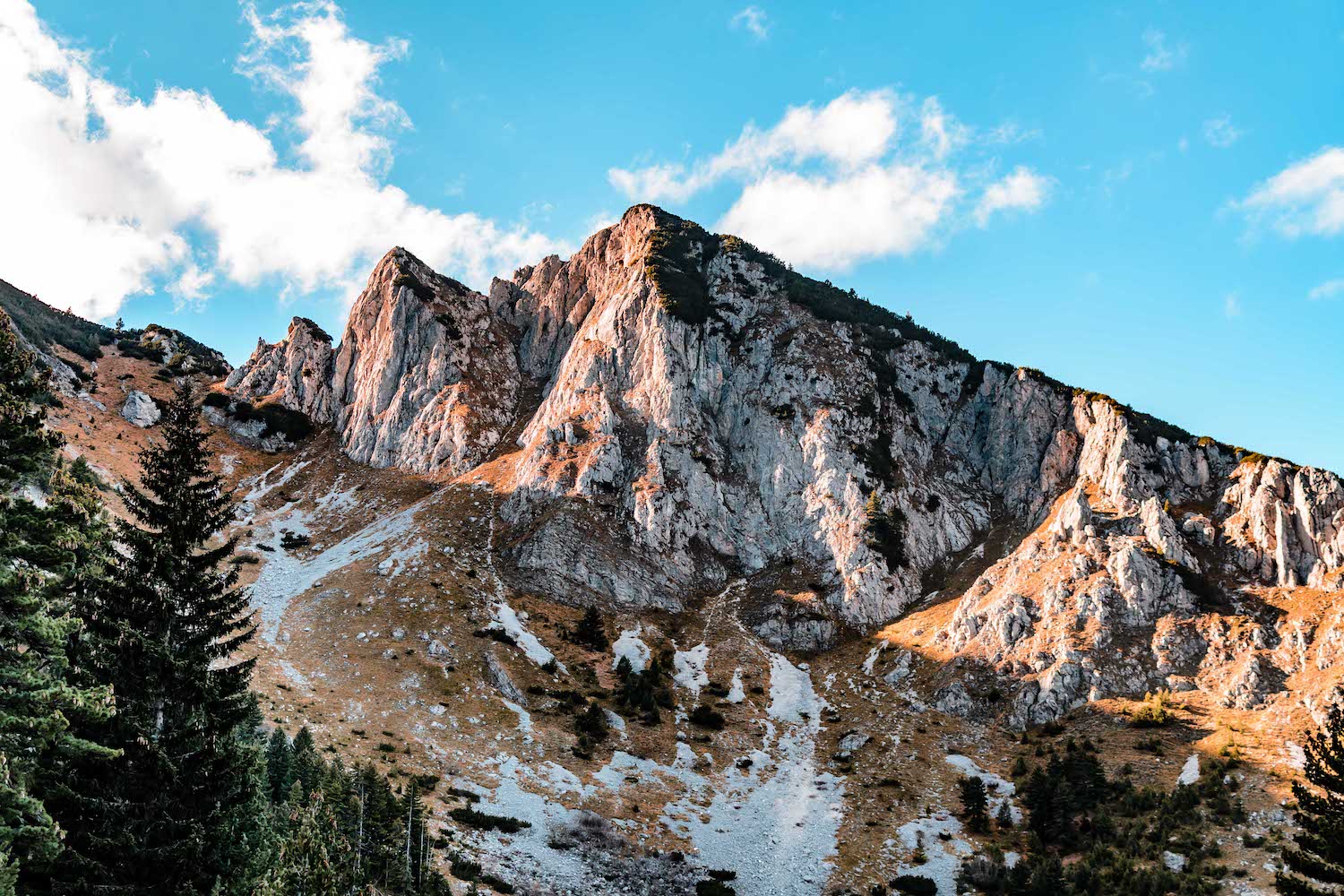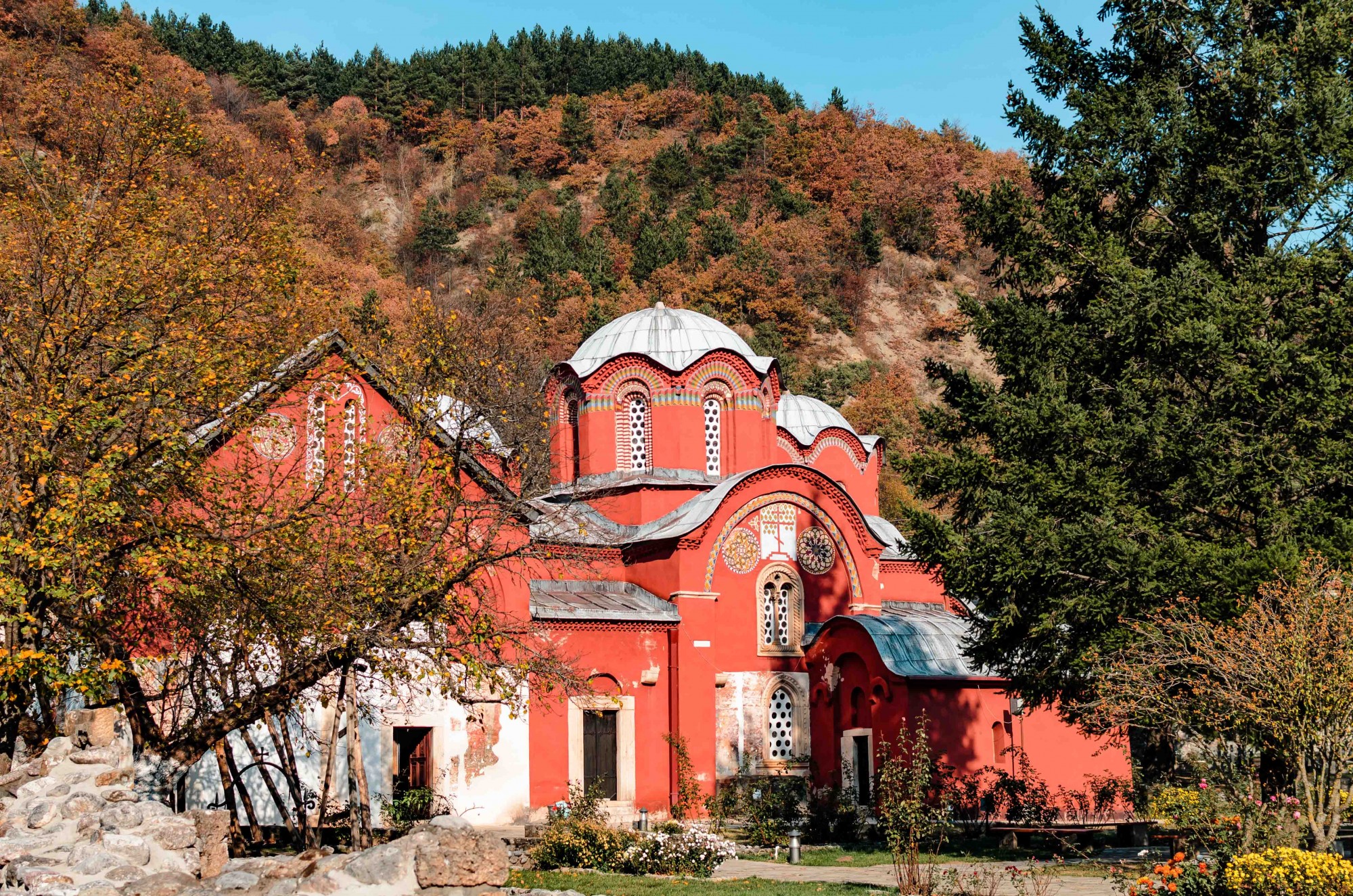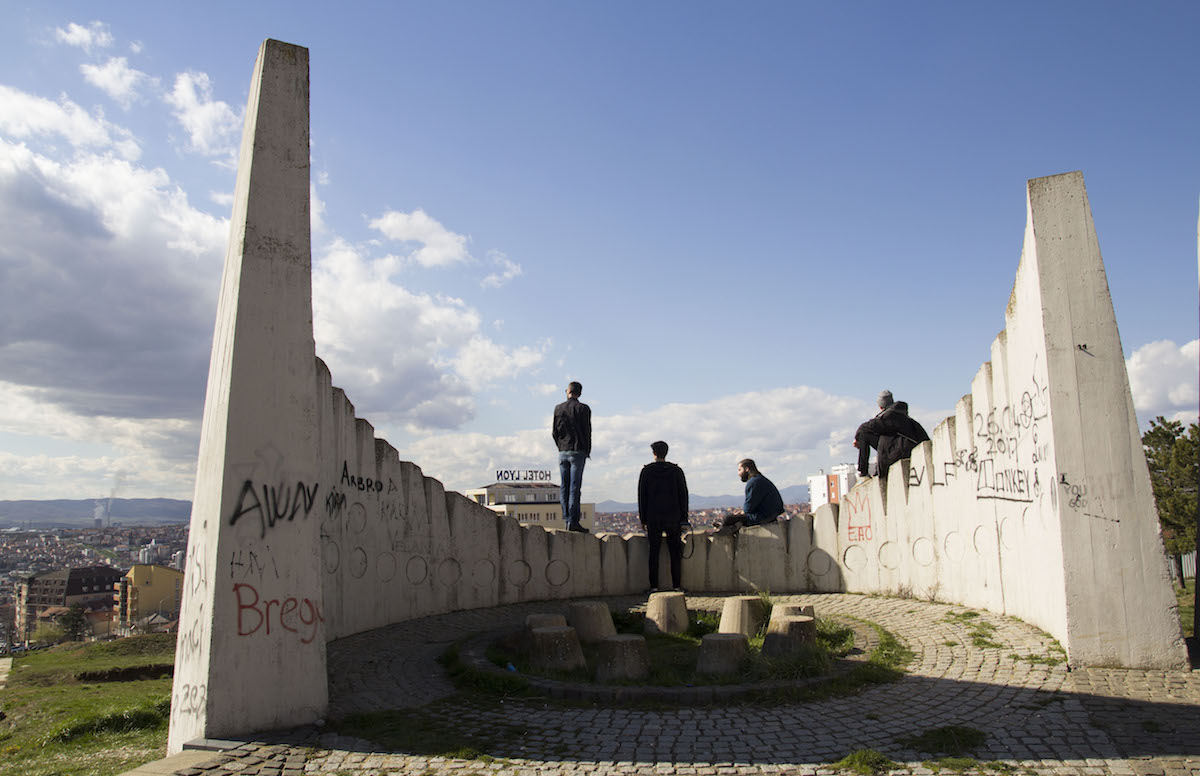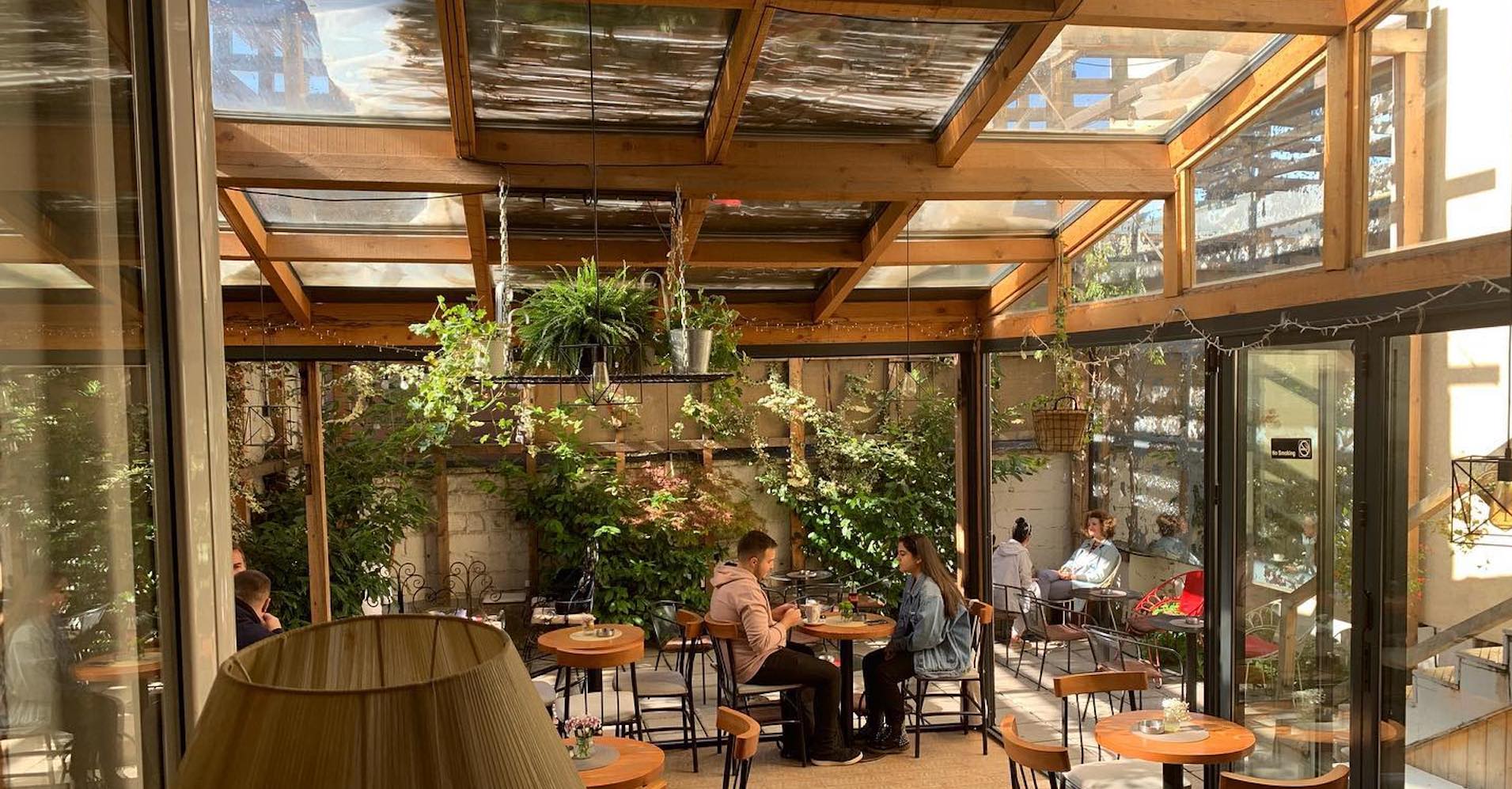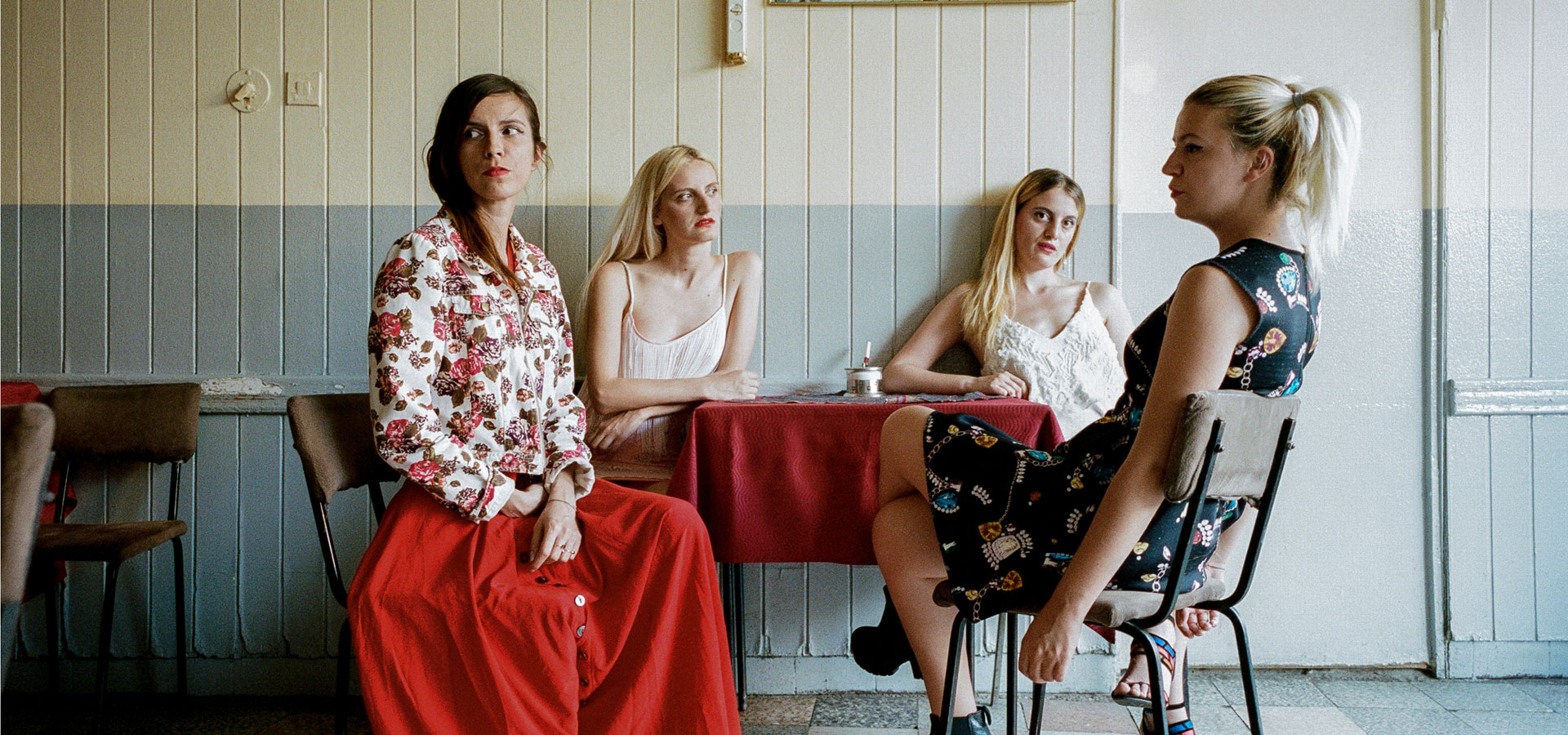From mountain to metropolis: your guide to driving through Kosovo’s Golden Triangle
There’s no better way to experience Kosovo than by hitting the open road between the nation’s leading cities: Pristina, Prizren, and Peja. On the way, you’ll catch glimpses of ancient monasteries, brutalist gems, and the raw untamed nature of its two national parks.
A growing number of international travellers have been making their way to Kosovo in recent years, as Europe’s youngest country gradually eschews the war-torn image inherited post-Yugoslavia. Most tourists will visit Pristina for lively café culture, Prizren for burgeoning cultural events, and Peja for the increasingly popular hiking trails in the nearby Balkan Mountains.
But if you want to experience all three, then picking up a rental car at Pristina’s Adem Jashari airport means that you can travel across the country in a relatively short amount of time. At just under 11,000 km sq, the size of Kosovo makes driving between each city incredibly straightforward, with each stretch taking as little as 90 minutes, depending on how often you’d like to stop and take in your surroundings (and if you’ve picked the best roads, then trust us, you’ll certainly need a few pitstops).
View of Prizren from Prizren fortress.
Pristina to Prizren via the Sharr Mountains
After you’ve rented a car, it shouldn’t take longer than half an hour to get from the airport to Pristina’s city centre. Visitors, however, can be caught unawares by the congestion in the small capital: Pristina is an incredibly busy city for a nation with a population of about 2 million people in its entirety. Don’t be surprised if you encounter speeding drivers or optimistic manoeuvres on the road either — the Pristina locals, or Prishtinali, are rightly known for their chaotic driving.
Once walking the capital’s narrow streets, however, you’ll find the warmest welcome from its residents, who are renowned for their hospitality. Days on end could be spent traversing Pristina’s many bars, cafés, restaurants and galleries, especially when coffees and beers come for as little as €1. Head to the affectionately named kafet e vogla (little cafes) on Fehmi Agani Street for rows of cafes that serve a mean macchiato — Kosovo’s speciality — during the day and turn into lively bars in the evenings. Rakija Street, officially named 2 Korriku, is also a great place to start a night out. Located off the central Mother Teresa Boulevard, it hosts a row of bars that sell Albanian spirit rakija in a selection of flavours including pear, quince and grape. For dinner, there’s no better than Renaissance, based on Musine Kokalari street, which offers a modern take on classic Kosovan dishes.
Having arrived in the city by car, getting out into the winding expanse of the Kosovar mountains is a must. But before you go, don’t miss the National Library of Kosovo. The building is one of the most unusual, and yet spectacular, structures in Europe: a Yugoslav-era construction with a total of 99 domes that represent the “plis”, a national Albanian hat.
If you’re heading from the capital to Kosovo’s second-city, Prizren, you could be tempted to jump on the hyper modern E851 highway out of the city. Instead, take the older R6, before switching to the south-western drop on the R115 for an unforgettable drive along the Sharr Mountains.
The Sharr Mountains
The Sharr Mountains, which stretch across Kosovo, Albania and North Macedonia, offer up scenic views all year round. Kosovo’s portion, which is protected as part of a national park, is at its best in the spring, when the sun lies across blankets of blooming trees, the canopies covering the cascading rock formations you’ll see throughout the drive. The autumn is also magical, as bursts of orange fir, juniper, and chestnut trees fight through the mist to create a mystical landscape all of its own.
The autumn is also magical, as bursts of orange fir, juniper and chestnut trees fight through the mist to create a mystical landscape all of its own
Fans of socialist-era architecture, meanwhile, may prefer to check out a different kind of view by turning into Brezovice, based in the sleepy Serbian enclave of Strpce, and heading to the Hotel Narcis. The grand communist-era hotel was abandoned following the Kosovo War, giving this small town an eerie feel. Visitors are, however, still able to access the space to purview its incredible interiors.
Further down the R115, it’s also worth taking a short stop in Prevalla, a mountain village where locals sell delicacies such as home-grown honey, syrups, and Kosovar specialty rasoj — fermented red cabbage juice with supposed health benefits. After this spot, the descent to Prizren begins: but before heading to Kosovo’s culture capital, take a rest at Hotel Sharri. Not only does the restaurant offer up spectacular views of the landscape, but it also serves traditional Kosovo-Albanian dishes and drinks. You might also be able to spot a built replica of the White House, transplanted from Washington D.C. to serve as a restaurant and wedding venue.
Prizren to Peja
As a major crossroad for the Balkan peninsula, Prizren is a Kosovar jewel with a wealth of cultural sites, inherited from the string of empires it has throughout its history. During the summer the city comes alive for the international documentary and short film festival Dokufest, and hosts a string of screenings around the city, both for private and public consumption.
Must-see sites in Prizren include the 11th century Prizren Fortress, which stands at the top of a hill overlooking the city and offers spectacular views, and the Ottoman-influenced Sinan Pasha Mosque, which sits on the banks of the city’s Lumbhardi River.
Beside Sinan Pasha, Mimar Sinani Street has a number of traditional Turkish tearooms — now a rare sight in Kosovo, even though the country once hosted them in abundance. Meanwhile, the popular Sheshi i Shadervanit has its own list of pubs, dessert bars and kebab shops. The bizarrely-named Te Kinezi, which translates to “at the Chinese”, is one of the best bars on the strip at the moment, a small establishment offering craft beers and rakija. In the summer, catch a showing at the outside cinema at Kino Lumbardhi, which also has a large indoor screen and an ever-changing multimedia exhibition space.
It’ll take a while, but after a day or so of eating qebapa (mini minced-meat kebabs) by the river, visiting its many bars and shisha cafes, and taking in the local Byzantine and Ottoman-influenced architecture, you might just be ready to depart and make a beeline to Peja.
Reaching the city is as simple as following the R107 for the entire duration of your journey. On the way, however, you may be tempted to stop for a coffee in Gjakova at the Old Bazaar — a lively spot packed with cafes, shops and restaurants. Alternatively, stop in the town of Decan to visit the 14thcentury monastery there. Located by the Lumbardhi River at the foot of the Accursed Mountains, the monastery is a World Heritage Site, described by UNESCO as “an irreplaceable treasure, a place where traditions of Romanesque architecture meet [the] artistic patterns of the Byzantine world.”
The Accursed Mountains
The Accursed Mountains make for some of Kosovo’s most dramatic landscapes. The ascent is punctuated by jagged peaks and steep valleys, folded among more gentle glimpses untouched pastoral life. There are plenty of activities on offer here; multiple hiking routes weave in and out from between the peaks, ski villages come alive in winter, and local families are always on hand to offer homemade flija — savoury layered pancakes — for passersby.
The ascent is punctuated by jagged peaks and steep valleys, folded among more gentle glimpses untouched pastoral life
If you’re pressed for time, focus on driving through the scenic Rugova Canyon, one of Europe’s longest and deepest gorges. As you leave Peja, at the entrance of Rugova Canyon on the M9, stands the Patrairchate of Peja Monastery. Built in the 13th century, the medieval building features a long walkway to transport visitors to a secluded walled space. Inside, you’ll find four churches, three of which are interconnected. It is deceptively easy to while away the hours in this hideaway from the modern world, spending your time exploring the multiple frescoes and gardens, and watching the daily lives of the nuns who tend to it all. From here, it is also worth driving further into the canyon, where you’ll be able spot a wealth of waterfalls, springs and caves among the rocks.
A man rides his bicycle through Prizren
Another key spot is Bogë, close to the Montenegrin border, which offers cabins throughout the year for approximately £35 per night. Not only does it make a good stop to explore the local hiking routes, but nearby restaurants are also on hand to serve local delicacies such as pasul (hearty bean soup), tave kosi (a yoghurt bake with veal) and grilled meat.
From here, it’s possible to take your foot off the pedal and relax into a leisurely drive back via the M9 before hightailing it back to Pristina on the E851.
